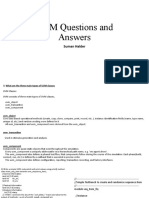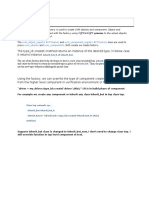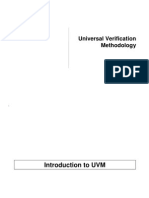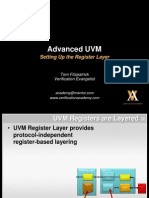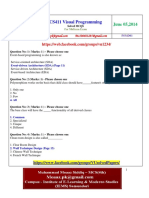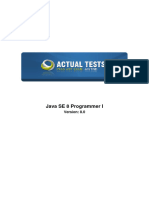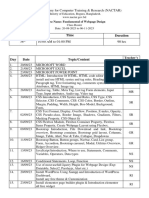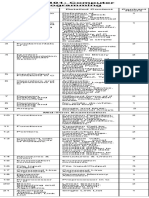0% found this document useful (0 votes)
122 views11 pagesUVM Notes32
The document outlines the components of the Universal Verification Methodology (UVM), including the UVM Sequencer, Driver, Monitor, Agent, Environment, Test, and Top. It details the functionality and interactions of these components, such as how the sequencer routes data between sequences and drivers, and how agents encapsulate these components. Additionally, it provides examples of how to create and configure these components within a UVM testbench.
Uploaded by
Aravind ReddyCopyright
© © All Rights Reserved
We take content rights seriously. If you suspect this is your content, claim it here.
Available Formats
Download as PDF, TXT or read online on Scribd
0% found this document useful (0 votes)
122 views11 pagesUVM Notes32
The document outlines the components of the Universal Verification Methodology (UVM), including the UVM Sequencer, Driver, Monitor, Agent, Environment, Test, and Top. It details the functionality and interactions of these components, such as how the sequencer routes data between sequences and drivers, and how agents encapsulate these components. Additionally, it provides examples of how to create and configure these components within a UVM testbench.
Uploaded by
Aravind ReddyCopyright
© © All Rights Reserved
We take content rights seriously. If you suspect this is your content, claim it here.
Available Formats
Download as PDF, TXT or read online on Scribd
/ 11
















